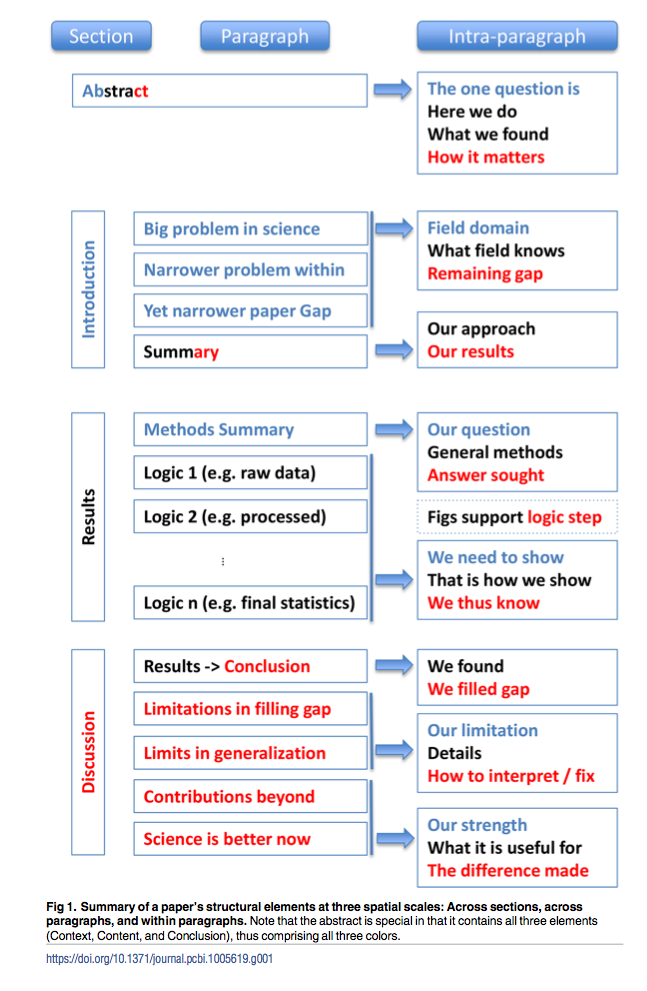
Who wouldn’t want to write more and better papers in a more efficient fashion? Here are ten simple rules that could help!

Who wouldn’t want to write more and better papers in a more efficient fashion? Here are ten simple rules that could help!
The two core papers of the Basel-Berlin Risk Study have recently been published and are now available online (please see below for the full references). In these two publications we investigated to what extent there is a broad and general factor of risk preference (akin to g, the general factor of intelligence), and whether risk preference can be considered a stable psychological trait. We addressed these questions by implemented 39 risk-taking measures from three different measurement traditions: Propensity measures assessing “stated preferences”, (incentivized) behavioral measures assessing “revealed preferences”, and frequency measures assessing actual real-world risky activities. This battery was completed by 1,507 participants, with 109 participants completing a retest–session after a period of six months.
The results indicate that the propensity and frequency measures converge relatively well, thus forming a “positive manifold”, whereas the (incentivized) behavioral measures show poor consistency (with the measures of the other measurement traditions, but also between each other). Moreover, our findings suggest that there is a broad general factor of risk preference, R, that accounts for 61% of the explained variance. This general factor is complemented by a series of domain-specific factors. Finally, the general factor proved to be highly reliable across a period of six months. To learn more about these results, please have a look at:
A second paper focuses exclusively on the behavioral measures (using the same dataset) and reports an extensive cognitive modeling analysis. The goal of this analysis was to investigate potential reasons for the lack of consistency across the various behavioral elicitation methods. People were found to differ substantially in the strategies they used in the various tasks, yet they did not do so in a very systematic way. Even at the level of model parameters, the consistency across behavioral tasks was poor, thus further calling into question the validity of behavioral measures as indicators of a person’s risk preference. The detailed analyses on the behavioral tasks are published in:
All in all, our results suggest that risk preference has a similar psychometric structure as other major traits. In particular the observation of the general and stable factor may have important implications for future investigations of the biological foundations of risk preference. Moreover, as the lack of consistency across behavioral tasks showed, more attention needs to be given to the assessment of risk preference.
Please also see our official press release.
Network plot showing the correlations between different measures of risk preference.

An interesting paper by Gravem et al. (title, abstract, and reference below) came out in the last issue of TREE (Trends in Ecology and Evolution) on whether one can tell if specific research is “transformative”. The authors argue based on a survey of 78 “transformative” researchers that it is difficult or perhaps impossible to tell a priori whether any piece of research has a breakthrough character and give the example of the concept of “keystone species” (i.e., a species that plays a critical role in maintaining the structure of a given ecology — analogous to the role of a keystone in an arch– for example, the canis lupus pictured above). Today, the keystone concept is relevant to a wide range of scientific areas but it was not fully acknowledged as an important discovery when first proposed by Robert Paine. Whether scientists can predict if research is groundbreaking has important implications for funding decisions because many agencies put a premium on “transformative” aspects, as is the case today with starting and consolidator grants of the European Research Council (ERC).
Transformative research is not easily predicted
Transformative research (TR) statements in scientific grant proposals have become mainstream. However, TR is defined as radically changing our understanding of a concept, causing a paradigm shift, or opening new frontiers. We argue that it is rarely possible to predict the transformative nature of research. Interviews and surveys of 78 transformative ecologists suggest that most TR began with incremental goals, while transformative potential was recognized later. Most respondents thought TR is unpredictable and should not be prioritized over ‘incremental’ research that typically leads to breakthroughs. Importantly, TR directives might encourage scientists to overstate the importance of their research. We recommend that granting agencies (i) allocate only a subset of funds to TR and (ii) solicit more realistic proposal statements.

We have Yaacov Trope, New York University, visiting and giving a talk in the Social, Economic, and Decision Psychology Colloquium this week (title and abstract follow).
Expansive and contractive regulatory scope
Adaptive functioning requires both being able to immerse ourselves in the here and now, with people who are like us and with us, contracting our Regulatory Scope, and being able to move beyond the local social environment to expand our Regulatory Scope. In order to effectively pursue desired ends that vary from the immediate to the very distant, humans have evolved a range of mental and social mechanisms to support both contractive and expansive Regulatory Scope and the ability to switch between them. Across these mechanisms, it is possible to distinguish a hierarchy of levels that vary in level of abstractness from a low-level concrete mode to a high-level abstract mode. The research that I will describe suggests that low-level modes of operation support contractive Regulatory Scope, whereas high-level modes of operation support expansive Regulatory Scope.

We have Pascal M. Gygax, University of Fribourg, visiting this week and giving a talk in the Social, Economic, and Decision Psychology Colloquium (title and abstract follow).
Why mechanics are always thought of as men: When language creeps into the way we perceive gender
When referring to a person’s personal, social or professional role as scientists, travellers or managers, knowing the person’s biological sex is not always crucial for comprehending the discourse. In fact, it rarely is. Research nevertheless suggests that readers of sentences where gender is not specified such as “Travellers to Basel are requested to change trains in Olten” still elaborate a mental representation of travellers to include gender. In the presentation, I will present data across different languages to show that readers tend to attribute gender to text protagonists when referred to by role nouns and that they often do so in ways that unnecessarily narrow their mental representation. I will argue that in grammatical languages where the masculine form is assigned a generic meaning – on top of its specific one – readers and listeners attribute gender to the relative disadvantage of women. Under the heading of “sexist language” this issue has been a topic of political debate since the 1970s, especially in those languages that have grammatical gender, such as German or French.
Wouter van den Bos, Rasmus Bruckner, Matthew Nassar, Ben Eppinger, and I, have a new review out discussing promises and challenges of computational neuroscience to understanding life span development (title and abstract follow).
In recent years, the application of computational modeling in studies on age-related changes in decision making and learning has gained in popularity. One advantage of computational models is that they provide access to latent variables that cannot be directly observed from behavior. In combination with experimental manipulations, these latent variables can help to test hypotheses about age-related changes in behavioral and neurobiological measures at a level of specificity that is not achievable with descriptive analysis approaches alone. This level of specificity can in turn be beneficial to establish the identity of the corresponding behavioral and neurobiological mechanisms. In this paper, we will illustrate applications of computational methods using examples of lifespan research on risk taking, strategy selection, and reinforcement learning. We will elaborate on problems that can occur when computational neuroscience methods are applied to data of different age groups. Finally, we will discuss potential targets for future applications and outline general shortcomings of computational neuroscience methods for research on human lifespan development.
A few of us (Laura, Regina, and myself) attended this year’s meeting of the Society for Neuroeconomics, which took place from October 5 to 7 in Toronto, Canada. Highlights of the conference were the Keynote by Nobel Laureate Robert J. Shiller on Narratives in Economics, three very intense poster sessions (each of us presented a poster on one of them), and a lot of high-quality talks on different topics around the neural and cognitive basis of economically relevant behavior. Cognitive models (esp. sequential sampling models of decision making) have become a key aspect of the conference in recent years, so this conference is actually also of interest for those of us who are not using neuroscientific methods. Next year, the conference will take place at the Wharton School of Business at the University of Pennsylvania in Philadelphia.
Obviously, the picture does not show anything from the conference or from Toronto, but the gorgeous landscape of the Algonquin Provinical Park, which I visited together with three PhD students from Paris after the conference. It is marvelous and just a 4h-drive away from the Toronto (so, basically nothing by Canadian standards).
The International Conference for Communication in Healthcare (ICCH) took place in Baltimore from October 8-11.
More than 600 people from more than 30 countries around the globe joined the conference. It was a great opportunity to connect with like-minded researchers and to learn more about interesting and well-done studies in healthcare communication. It was a pleasure for me to give a talk about the impact of information structuring in discharge communication on patients’ recall performance. I really enjoyed talking about research with well-known but also with newly met people from Norway, the Netherlands and all over the globe.
Next year’s ICCH will be held in Porto, Portugal.
 Marc Schreiber of the ZHAW School of Applied Psychology will visit us this week and present the tools he uses for ecological assessments of situational and personality characteristics in the job context. Marc will be around for coffee after the presentation, so feel free to stop by at the CDS meeting room if you like to talk to him. Please note that this talk will be in German!
Marc Schreiber of the ZHAW School of Applied Psychology will visit us this week and present the tools he uses for ecological assessments of situational and personality characteristics in the job context. Marc will be around for coffee after the presentation, so feel free to stop by at the CDS meeting room if you like to talk to him. Please note that this talk will be in German!
Prof. Dr. Marc Schreiber hat an der Universität Zürich Psychologie, Volks- und Politikwissenschaften studiert und im Bereich der Laufbahnpsychologie promoviert. Am IAP Institut für Angewandte Psychologie der ZHAW Zürcher Hochschule für Angewandte Wissenschaften leitet er das Zentrum Berufs-, Studien- und Laufbahnberatung. Er ist als Berufs-, Studien- und Laufbahnberater sowie Dozent in den Bereichen Laufbahn-, Outplacementberatung, Persönlichkeitspsychologie und Diagnostik
Marc Schreiber wird die App «Persönlichkeitsdiagnostik» vorstellen. Die App wurde am IAP auf der Basis der Whole Trait Theory, welche besagt, dass sich ein Trait als intraindividuelle Verteilung von States darstellen lässt, entwickelt. Mit der App, welche künftig in Beratungen und Therapien eingesetzt werden soll, können Daten zur Persönlichkeit zu mehreren Messzeitpunkten pro Tag erfasst und dargestellt werden. Die App kann kostenlos bei iTunes und Google Play heruntergeladen werden.
The Royal Swedish Academy of Sciences awarded the Sveriges Riksbank Prize in Economic Sciences in Memory of Alfred Nobel 2017 to the economist Richard Thaler, University of Chicago, USA, “for his contributions to behavioural economics“, including the areas of limited rationality, social preferences, and lack of self-control.
His book Misbehaving gives a very readable introduction to his work and the field of behavioural economics more generally.

I’d like to recommend a podcast that may be interesting to many of us interested in psychology – NPR’s Hidden Brain.
The podcast typically features interviews with behavioural scientists, such as psychologists and economists, and gives informative and entertaining accounts of recent research in these areas. For example, recently, it has had episodes on job crafting (Amy Wrzesniewski) , affective forecasting (Dan Gilbert), or regret (Amy Summerville), that should be interesting to many of us in the Social, Economic, and Decision Psychology area. Enjoy!

We have Alex Koch, University of Cologne, visiting and giving a talk at our Social, Economic, and Decision Psychology colloquium this Thursday (Oct 5th, 13:00; title and abstract follow).
(Why) good is more alike than bad: Implications for social cognition and judgment
Humans process positive information and negative information differently. These valence asymmetries are often summarized under the observation that ‘bad is stronger than good’, meaning that negative information has stronger psychological impact (e.g., in feedback, learning, or social interactions). This stronger impact is usually attributed to people’s affective or motivational reactions to evaluative information. We present an alternative interpretation of valence asymmetries in processing based on the observation that positive information is more similar than negative information. We explain this higher similarity based on the non‑extremity of positive attributes, discuss how it accounts for observable valence asymmetries in processing (classification, categorization, generalization, recognition etc.), and show how it predicts hitherto undiscovered phenomena.